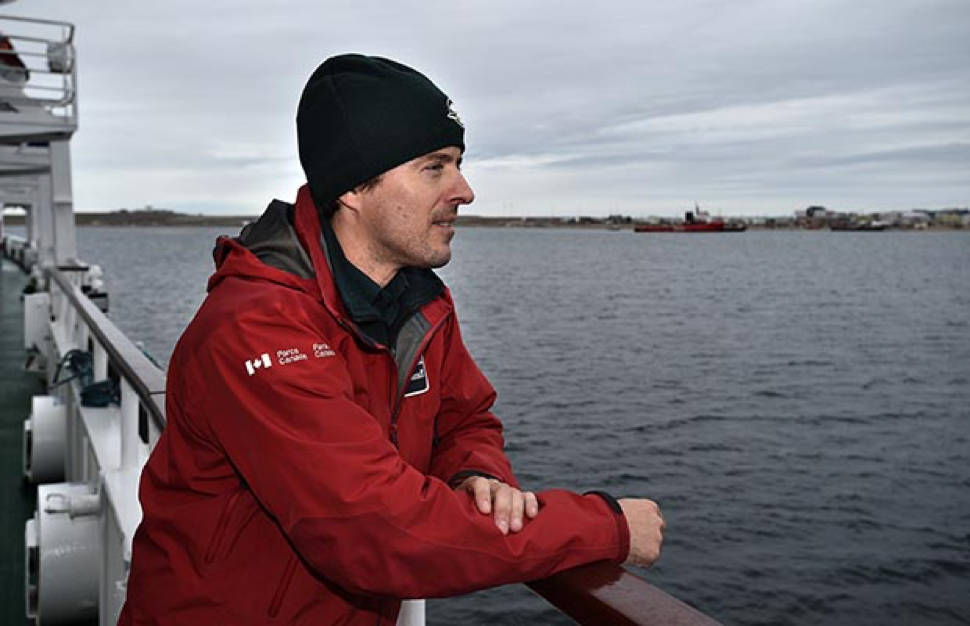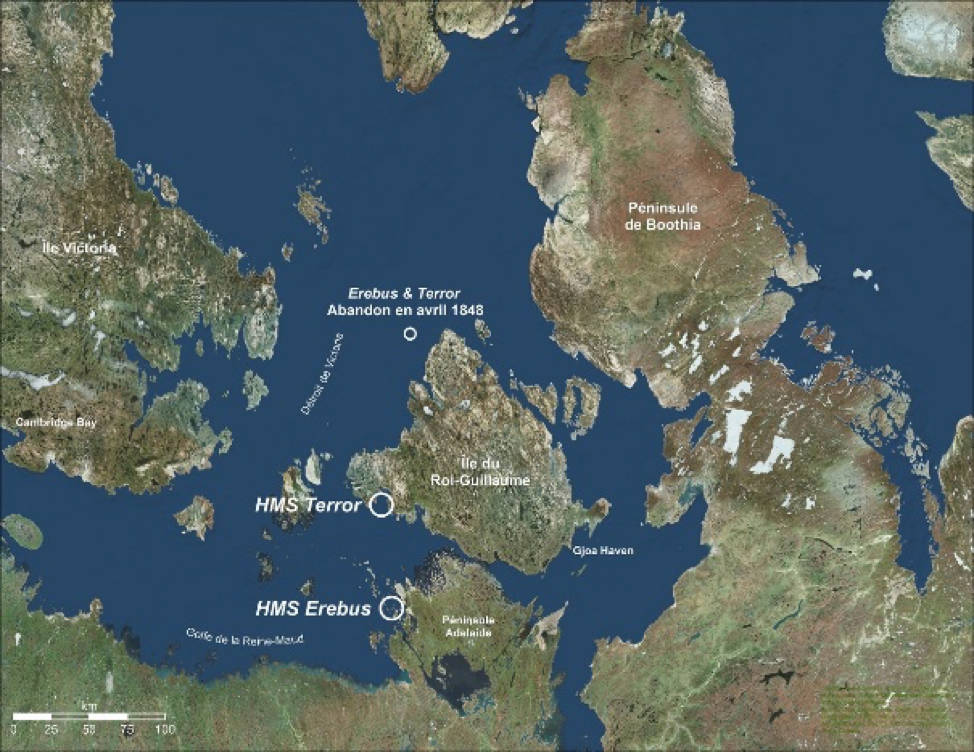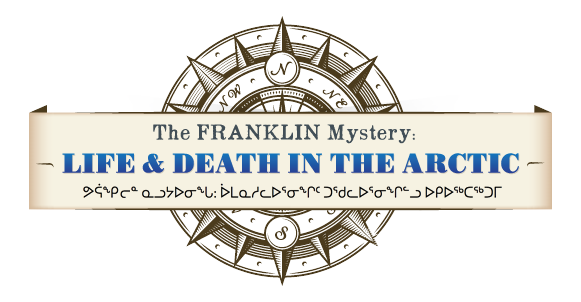Intrepretive Essay by Charles Dagneau
 Charles Dagneau
Charles Dagneau
Bio: Charles Dagneau was born in Québec City, Canada, where he studied archaeology at Université Laval (Québec), between 1996 and 1999. He completed a Master’s degree in archaeology at Université de Paris 1 Panthéon-Sorbonne in 1999-2001 and then a PhD degree in anthropology at Université de Montréal in 2003-2009. Since his very beginnings in the field in 1996, Charles has worked both as a land and as an underwater archaeologist on a variety of sites in Canada, in the USA and in France. He specialized in 17-18th Century post-medieval maritime archaeology, naval architecture, material culture studies and wood analysis, including dendrochronology. Charles was involved in multiple excavation projects, such as those of the Cavalaire Wreck (France, 16th c.), the Elizabeth and Mary (Quebec, 1690), Fort Saint-Louis (Texas, 1685), Lapérouse shipwrecks (Salomo Islands, 1788), Aber Wrack 2 (France, 18th c.). Charles most notably worked with Adramar association and the French ministry of Culture (Drassm) on La Natière shipwrecks (Dauphine, 1704 and Aimable-Grenot, 1749) between 1999 and 2007. He joined Parks Canada in 2008 and participated on a number of research and survey projects across the country since then.
What do the discoveries of the wrecks, and your own knowledge and research, tell us about what happened to the Franklin Expedition?
 Map showing Terror and Erebus wreck sites (Parks Canada)
Map showing Terror and Erebus wreck sites (Parks Canada)
The location of the two wrecks forces us to reconsider the traditional narrative concerning the Franklin Expedition (Cyriax 1997). Indeed, before the discoveries, our knowledge of the Franklin Expedition following the desertion of the two ships off Victory Point in April 1848 was based on scarce archaeological evidence on King William Island and Inuit oral history, primarily gathered by search parties after 1850. Nineteenth-century Inuit oral history recounts that one of Franklin’s two ships was crushed in the ice west of King William Island while the other made its way as far south as the Adelaide Peninsula where it finally sank in the waters around O’Reilly Island (Barr 1999; Hall 1879; Gilder 1880; McClintock 1859; Rae 2014; Schwatka 1882; Stackpole 1965; Woodman 1991). Knowledge from nineteenth century Inuit witnesses to the sinking of the southern wreck was a key element in the discovery of Erebus in 2014 (Moore et al. 2017; Schwatka 1882: 125-126; Gilder 1880:78-79). Terror was finally located in 2016 much farther south than the desertion point, in Terror Bay, thanks to recent local Inuit knowledge (Dagneau and Moore 2017; Watson 2017:324-336).
If Erebus was re-manned to its final destination as suggested by oral tradition, it would have successfully sailed to an area already surveyed by a previous expedition, thus in effect completing the mapping of one of the North West Passage routes. The Franklin Expedition would have succeeded in its ultimate goal, although at an unbearable cost. From Wilmot and Crampton Bay, Erebus would have been in a good position to complete the North West Passage through open water during the following summer. As for Terror, it could have sailed west through the Queen Maud Gulf from Terror Bay. Terror’s location is also to be considered in relation with the alleged “hospital site” in Terror Bay. Indeed, Inuit accounts gathered in the nineteenth century describe the presence of a substantial camp located at or near the head of Terror Bay. A large number of bodies associated with the Franklin expedition were discovered by McClintock at this location, called the “hos¬pital site” (McClintock 1859:75-76). According to Inuit testimony recorded later by Schwatka, the same site was washed away in 1873 (Schwatka 1882). However, the location of the site has never been positively identified by archaeologists (Stenton 2016:19).
It is not possible at this point to categorically determine if the hulls drifted un-manned to their final destination or if they were re-manned and navigated. Both wrecks are conveniently located in fairly enclosed places, which seems to suggest that they might have been re-manned. That being said, there is also the probability that Erebus and Terror were naturally drawn by sea ice towards Alexandra Strait from their 1848 desertion point, but it is unclear what combination of forces or circumstances, both natural and human, brought Terror in Terror Bay, and Erebus in Wilmot and Crampton Bay, at their respective final locations.
Archaeological data gathered by Parks Canada Underwater Archaeology Team in 2015-2017 indicates that both vessels were in winter quarters configuration rather than ready for navigation when they sank (Moore et al. 2017; Dagneau and Moore 2017). Bower anchors on both ships were found close to the hull (Erebus) or catted in position (Terror); however, we do not yet know if any ice anchors were deployed prior to sinking. In the case of Terror, this interpretation is also supported by a number of observations, for example the presence of fore-and-aft spars that could have acted as ridge poles for winter awnings; winter hoods on the companionways; vertical stove funnels installed on the upper deck, including one within the capstan bars’ swing space, as well as the absence of a rudder and a propeller in their working positions.
What new questions come to mind?
Most of the main research questions are yet to be answered. The discoveries of Erebus and Terror mark the next phase of a long-term scientific investigation by Parks Canada and its partners. Some of the specific questions that come to mind following the discoveries are:
Why are the ships not found together? Were they re-manned or not? If re-manned, was Terror used as a base of operation in Terror Bay and related somehow to a so-called “hospital site”, while Erebus was used to navigate and explore farther south? How many able men were part of the expedition party (or parties) at that point?
What type of archaeological remains or traces will be found on the shores of Terror Bay and on the small islands nearby Erebus in Wilmot and Crampton Bay? How do the site locations help us to re-interpret the regional distribution of so-called “Franklin relics”, as well as raw material salvaged and traded by Inuit populations?
What information are you hoping will be revealed by archaeological excavations of the wrecks and more research?
Given the exceptional state of preservation of both wrecks, it is believed that future archaeological excavations by Parks Canada will contribute to better understand part of the events and chronology about the Franklin Expedition, much of it still shrouded in mystery (Moore et al. 2017; Dagneau and Moore 2017). This excavation work will likely provide opportunities to:
- Study coherent groups artifacts from sealed spaces, such as the officer’s cabins, seamen’s chests, and carpenter’s stores, etc., including artifacts associated with known individuals aboard the vessels. This will help us interpret who was still alive and who was not when the ships were deserted or re-deserted;
- Learn more about the daily lives of the regular seamen, often forgotten in historical records; Better understand ship modifications and outfitting in 1845, for example hull strengthening, cabin configurations, modifications for auxiliary steam propulsion;
- Learn more about innovative specialized equipment used for the expedition. For example the retractable propeller, Preston illuminators, Frazer stove, presumed Phillip’s capstan, Massey pumps, etc.;
- Study some of the scientific instruments on board and reconstruct activities conducted during the expedition, through written material (if it survives and is accessible) and collected specimens;
- Determine the extent of potential remaining supplies, such as food, clothing and coal. Coal was used not only for heating purposes but also for steam navigation;
- Understand the extent of Inuit salvage activities on Erebus (and possibly Terror) prior to sinking, as well as the regional impact of these new influxes of raw material (metal and wood); and
- Discover written documents in the form of standard Royal Navy logs, notes or a registers, not to mention correspondence and scientific records, informing us about the chronology and fate of the expedition from beginning to end.
Sources cited
Barr, William, editor. 1999. Searching for Franklin: The Land Arctic Searching Expedition 1855: James Anderson’s and James Stewart’s Expedition via the Back River. Hakluyt Society, London.
Cyriax, Richard J.1997. Sir John Franklin’s Last Arctic Expedition The Franklin Expedition. A Chapter in the History of the Royal Navy. 2nd edition. The Arctic Press, Sussex.
Dagneau, Charles, and Jonathan Moore. 2017. HMS Terror Archeological Survey April 2017. Wrecks of HMS Erebus and HMS Terror National Historic Site of Canada. Underwater Archaeology Team, Parks Canada, Ottawa.
Gilder, William H. 1880. Schwatka’s Search: Sledging in the Arctic in Quest of the Franklin Records. Sampson Low, Marston, Searle, and Rivington, London.
Hall, Charles Francis.1879. Narrative of the Second Arctic Expedition Made by Charles F. Hall: His Voyage to Repulse Bay, Sledge Journeys to the Straights of Fury and Hecla and to King William’s Land, and Residence Among the Eskimos During the Years 1864-’69, editor E. Nourse. Government Printing Office, Washington.
McClintock, Francis Leopold. 1859. The Voyage of the “Fox” in the Arctic Seas: A Narrative of the Discovery of the Fate of Sir John Franklin and His Companions. John Murray, London.
Moore, Jonathan, Charles Dagneau, Marc-André Bernier, Ryan Harris, Thierry Boyer, Filippo Ronca, Brandy Lockhart, and Joe Boucher. 2017. HMS Erebus Underwater Archaeological Surveys 2015 and 2016. Wrecks of HMS Erebus and HMS Terror National Historic Site of Canada. Underwater Archaeology Team, Parks Canada, Ottawa.
Rae, John. 2014. John Rae’s Arctic Correspondence, 1844-1855. TouchWood Editions, Victoria.
Schwatka, Frederick. 1882. The Search for Franklin : A Narrative of the American Expedition under Lieutenant Schwatka, 1878 to 1880. T. Nelson and Sons, London.
Stackpole, Edouard, editor,1965. The Long Arctic Search: The Narrative of Lieutenant Frederick Schwatka, U.S.A. 1878-1880, Seeking The Records Of The Lost Franklin Expedition. Marine Historical Association, Mystic.
Stenton, Douglas R. 2016. Franklin Search Expedition2016. Permit Report NAP 2016-4A. Government of Nunavut Department of Culture and Heritage, Igloolik.
Watson, Paul. 2017. Ice Ghosts. The Epic Hunt for the Lost Franklin Expedition. McClelland & Stewart, Toronto.
Woodman, David C. 1991. Unravelling the Franklin Mystery: Inuit Testimony. McGill-Queen’s Unversity Press, Montréal.


